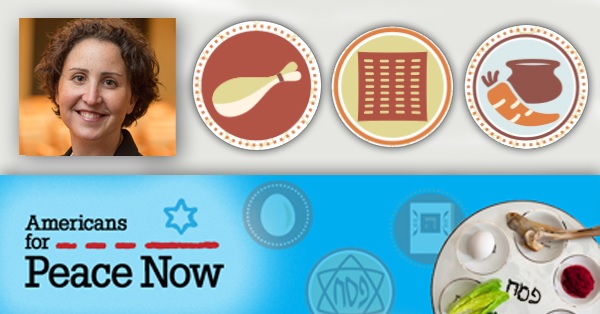
Each year at the Seder, Jews read this line in the Passover Haggadah, "In every generation, a person is obligated to see themselves as if they had left Egypt." This concept reminds us that each year we must approach the haggada with a fresh eye. It demands that we not merely read the words, but understand them afresh. We must have both empathy for what our forefathers and mothers have suffered, and – more importantly – be aware that change is possible, that we are masters of our fate, and that with determination and courage we can accomplish liberation. In our generation, liberating Israelis and Palestinians from the yoke of the occupation, which is subjugating both societies, is imperative. And it is within our reach.
This year, you can add flavor to your seder by sharing this thoughtful reflection by Rabbi Rachael Bregman. Rabbi Bregman has graciously contributed our 18th haggadah insert. In it, she asks us to reflect upon what questions we want to ask this year, offers questions for the table - to be asked when we reach the explanation of the three symbols of Passover: pesach (the offering), matzah and maror.
Since 2001, Americans for Peace Now has asked rabbis from the extended APN family to contribute reflections on the haggadah: that story which has for centuries been understood as the archetype of liberation. Many of us have made these reflections a permanent part of our seder - we hope you will, too. You can find them here.
May we all enjoy a sweet and liberating Passover,

Debra DeLee
President and CEO,
Americans for Peace Now
Submitted by Rabbi Rachael Bregman (2018)
To be read before the three symbols of Passover.
 Rabbi Rachael Bregman is the Berman Family Rabbinate Rabbi at Temple Beth Tefilloh
in Brunswick GA. She is the first female rabbi in the synagogue's 130 year history and the first
resident rabbi in over fifty years. She is a Rabbis Without Borders Fellow, sits on the board of
FaithWorks and likes to compete in Tough Mudder races. She lives in Brunswick, Georgia with her daughter
and her rescue dog.
Rabbi Rachael Bregman is the Berman Family Rabbinate Rabbi at Temple Beth Tefilloh
in Brunswick GA. She is the first female rabbi in the synagogue's 130 year history and the first
resident rabbi in over fifty years. She is a Rabbis Without Borders Fellow, sits on the board of
FaithWorks and likes to compete in Tough Mudder races. She lives in Brunswick, Georgia with her daughter
and her rescue dog.
Rabban Gamliel answers the question, "What is required to feel the intensity and the urgency of the seder
enough to get you up out of your seat such that you must respond to injustice in the world?"
His answer: Passover, Matzah and Maror. These are the symbols we investigate to identify the wrongs which
must be set right.
Especially when considering issues around justice in the Palestinian-Israeli conflict, what do these symbols suggest?
Passover: Where are people or their rights being sacrificed for someone else to have
power?
Matzah: Also known as the bread of affliction: Where is someone being afflicted or
suffering under hardship imposed upon them so that someone else gains power?
Maror: Where have people’s lives been embittered for the sake of someone else to take away
the power of others for their own gain?
Click here to see all the haggadah inserts from previous years.
